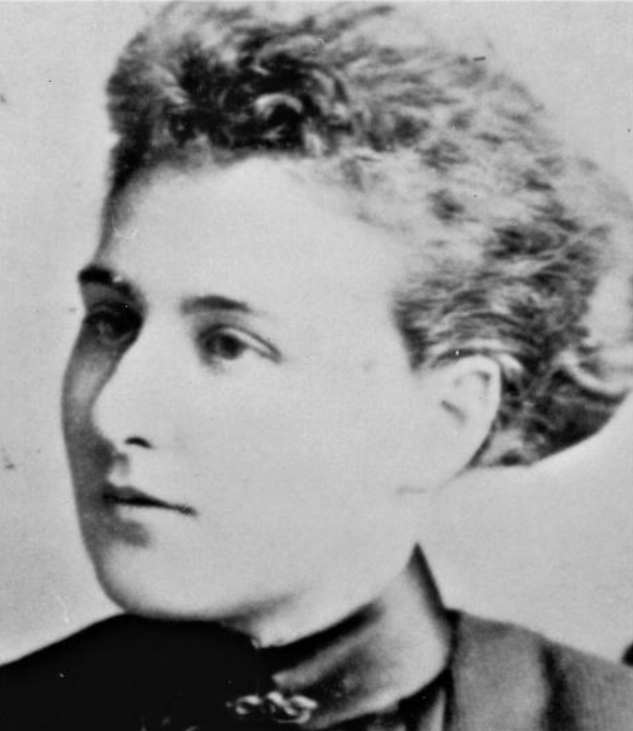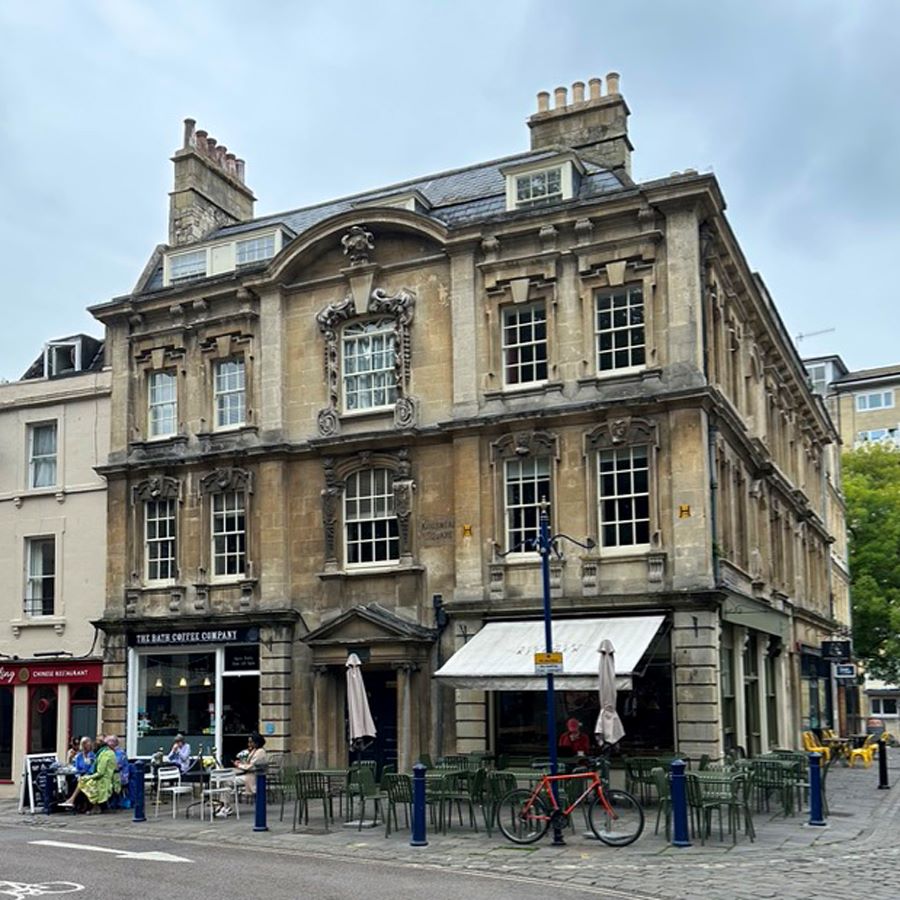Infant Mortality – Social Concern and Responses
During the last quarter of the nineteenth century, general mortality rates began to decline but the rate of infant mortality (babies who died under the age of one) remained high. At the same time the birth rate was falling. These trends were highlighted by the 1901 Census and by Medical Officer of Health reports.
Social concern about this issue led to responses from municipal authorities and voluntary associations – ranging from clinics that gave advice to mothers on infant care and monitored the health of babies, to home visits and, in some cases, school visits to assess older children. Recognition that action was needed led to legislation such as the Notification of Births Act in 1907, which required births to be registered within 36 hours so that contact with new mothers and babies could be initiated as quickly as possible. Although the impact of housing conditions and poverty was recognized, and the role of bacteriology in infections was understood, the main responsibility for high infant mortality rates was thought to lie with the mother.
The Role of Health Visitors
It was in this context that the role of health visitor was seen as crucial. The early Health Visitors were expected to visit families at home, prioritising mothers with new babies, to advise on infant care, monitor infant weight and signs of ill health, to check on sanitation and to give guidance on hygiene within the approach to disease prevention that was current at the time. Importantly, where they assessed that a referral for medical treatment was urgently needed, they flagged up their assessment so that action could be taken promptly. Their role was a community based public health role, rather than a role requiring medical qualifications such as midwifery.
Florence Nightingale was responsible for the first education programme for health visitors. In her promotion of health visiting in the early 1890s, she advocated that it would enable people to stand upon their own feet, rather than aiding them when they failed or fell. She was of the view that health visitor qualifications should be different from nursing qualifications, but of the same standard, not lower standards – thus providing a new profession for women.
These views were not necessarily fully reflected in the early development of the new service. In Bath, the initial debates regarding the need to appoint one Health Visitor took place over several years, until councillors were finally persuaded in 1907 that the Medical Officer of Health, Dr W.H.Symons, needed a female assistant who could visit mothers and children at home to advise about disease prevention. It is not apparent in available sources why these debates were so protracted, compared to other areas of the country, but it could be the case that Bath councillors saw public health issues as being more of a concern for the major industrial cities, rather than the smaller and relatively less disadvantaged city of Bath.

In the early 1900s the Infant Mortality rate for Bath averaged 60 per 1000 births compared to 128 in England and Wales in 1905. Deaths from measles was a key national concern but in Bath the figures were relatively low at between 1 and 3 instances for Bath in the early 1900s..In that period, deaths of infants under one year old in Bath averaged 60 per 1000 population in the Bath area. progress in public health measures resulted in Bath receiving a Daily News national award in 1924 for reducing the death rate of children between 1 and 5 years old, by more than 50%.
The First Health Visitors in Bath
In June 1907, Dora Caws took up her post as the first health visitor in Bath. She was a qualified midwife with experience at Guys hospital in London. The council’s cautious approach to the new role led to her being offered just a three-month contract. In that three-month period, she visited 90 infants in their homes and advised their mothers. Most visits were in the relatively disadvantaged city areas of Kingsmead, the Dolemeads and Snow Hill in Walcot. Doctor Symons MOH, observed in a report that she was received well by poor families.
Miss Caws established a pattern of visiting as a follow up to a midwife’s involvement, encouraged breast feeding and advised on disease prevention. Her effectiveness including an apparent prevention of a number of infant deaths, led to the role being made permanent after her departure and a successor, Miss Read was appointed.
Miss Read resigned less than a year later, due to ill health. Questions at a council meeting led to the revelation that she had been carrying out 20 visits per day, walking to every appointment. This work rate had probably also applied to Dora Caws. Miss Read was replaced by Hilda Lea, who also resigned due to ill health, stating that she was not physically able to carry out the required duties.
Elizabeth ‘Lizzie’ Axten, a Certified Nurse from Trowbridge was newly in post as the Health Visitor by the end of 1908. She continued to encourage the registration of births as the level of recording was low in poorer areas of the city.
As already noted, the workload for the health visitor was a heavy one and Lizzie Axten cooperated closely with the Baby Visiting Association– these arrangements included her giving briefing talks to their members on topics such as rickets. the Association was founded in 1910 – it was a group of volunteers, married and unmarried women from middle class backgrounds, who offered advice on baby care and welfare at weekly sessions. The Association coordinated with the first Health Visitor in Bath and sought to develop their knowledge by attending lectures. They were supported by Dr Effie Craig who was based at the Eastern Infirmary in the city.

A report issued in 1911 highlighted very positive achievements by the first Health Visitors, including an estimation that some 80 infant deaths had been prevented. A total of at least 3500 visits to new mothers had been made over the previous four years. It was agreed that there was more than enough work for two or three Health Visitors. Mothers had increasingly begun to proactively demand advice. Doctor Symons complained that some twenty to thirty mothers were cramming into his offices on Saturday mornings – creating ‘pandemonium’, untenable for his practice.
Mother's School
The idea of a mother’s school was first put forward in 1911. At a mother’s school, groups of new mothers could gather to understand more about the care of newborns and infant development. This could potentially reduce the number of home visits and enable mothers to support each other. A measure put in place the following year was to refer one-year olds to the Baby Visiting Association for visits and advice to their mothers, leaving the Health Visitor to focus on the needs of babies and new mothers.

Miss Axton’s capacity could not extend to the increasing cases of tuberculosis in the community and a decision was taken in 1912 to appoint a specialist TB Health Visitor. By then, Health Visitors were given travel allowances including a cycle allowance. Prevention of transmissible diseases was a high priority – it was in this period that school closures were considered as a means of controlling the spread of measles.

At last, in 1914, the Baby Visiting Association was offered a room at Rosewell House on Kingsmead Square, for use one afternoon a week with groups of mothers. A small grant was allocated for baby weighing equipment. Miss Axton was expected to be present to advise and supervise which she was happy to do, as she was enthusiastic about the project. In the following year this ‘mother’s school’ was expanded, and a new part time Health Visitor was appointed to provide dedicated professional support.
By this time, discussion was taking place about the possibility of prenatal care, given the benefits of post-natal monitoring and advice. The concern was focused on disease prevention where diseases such as syphilis potentially harmed an unborn child. The first tentative steps were taken to organise what we would identify today as prenatal clinics.
Council or Charity
In 1916 a second general Health Visitor was to be appointed. The MOH, Doctor Symons, was soon to retire. He insisted that the appointment was entirely handled by the Visiting Association as he didn’t see himself as dealing with babies’ dummies. The ensuing council discussion led to him being overruled, as it was felt that the care of infants was clearly a council responsibility – he was told to draw up the description of the duties for the new post and in due course, Mrs Gertrude Inman was offered the post. Interestingly, the dissenting view expressed by Doctor Symons could have led to Health Visitors in Bath being employed and managed by the charity sector for some years – a more insecure and downgraded status. The qualification requirements were not formalised nationally for health visitors until the 1920s, but an expectation was that at least a midwifery qualification was needed.
The first ten years of the role of paid Health Visitors in Bath is a record of extraordinary dedication in difficult conditions. The underlying principles of the service have stood the test of time over a hundred years later, in offering specific advice in the home environment for young families, complemented by ‘community hubs’ that offer more general check-ups and guidance. Research emphasising the importance of early years development for the lifelong well-being of children and adults has underpinned the value of this community-based health service.
Article by Dr Linda Watts
Sources
Bath Chronicle and Weekly Gazette archives
Adams C. (2012). ‘History of Health Visiting’ in Nursing in Practice, Sept/Oct 2012, No 68.
Davin A. (1978). ‘Imperialism and Motherhood’. in History Workshop, Spring 1978.
Marland H.(1993). ‘A Pioneer in Infant Welfare: the Huddersfield Scheme 1903 – 1920’ in the Society for the Social History of Medicine journal.
Wellcome Trust Archives. Medical Officer of Health Reports for Bath.